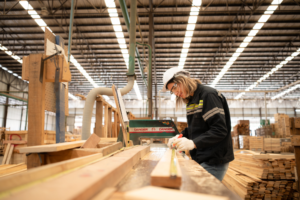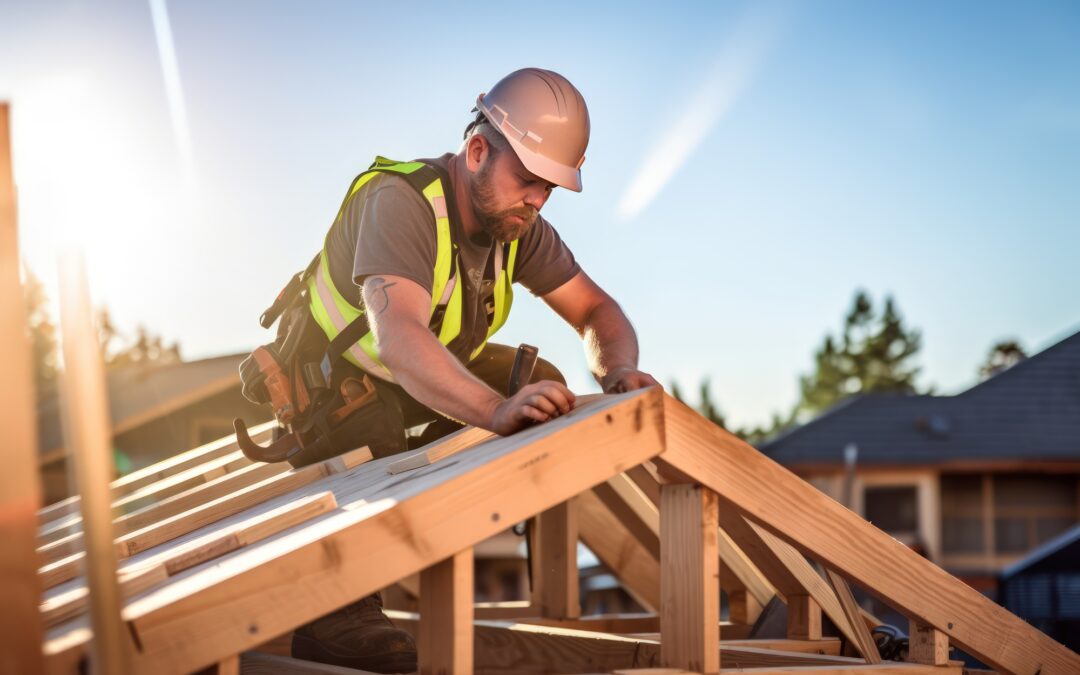For centuries, timber framing was the tried-and-true method for building homes and structures. But, the advent of concrete, steel, and masonry in the 20th century led to a decline in timber construction, especially in urban areas. However, the tide is turning once again thanks to engineered timber.
Engineered timber products are reinventing wood construction. Now, they are rapidly transforming residential and commercial building landscapes. Here’s why:
Sustainability
First off, it’s important to talk about the environment. In today’s world, ‘going green’ isn’t merely a trend but a necessity. Engineered timber steps up as a hero in this realm. It’s sourced from sustainably managed forests, where for every tree chopped down, another is planted. This cycle of renewal ensures that the material is not just renewable but also a key player in the fight against climate change.
The carbon footprint of engineered timber is impressively low, especially when comparing it to the usual suspects like concrete and steel. These traditional materials are quite the carbon culprits, emitting a hefty amount of CO2 during production. In contrast, engineered timber is more like a carbon vault, locking away CO2 absorbed by trees during their growth. As you learn more about engineered timber frames, you’ll realize that it’s not just a construction material—it’s a statement for the planet.
Acoustic And Thermal Insulation
Diving deeper into the benefits of engineered timber, can’t not talk about comfort—specifically, acoustic and thermal insulation. Timber, by its very nature, is a fantastic insulator. This means homes built with engineered timber, including frames and trusses, can maintain a more consistent internal temperature.
This leads to a cozier living environment and potentially lower heating and cooling costs. It’s like wrapping your house in a snug blanket, keeping the warmth in during winter and the heat out during summer.
Moreover, the acoustic properties of timber are something to marvel at. Engineered timber can significantly reduce sound transmission, creating a tranquil, serene living space. It’s like having a built-in noise-canceling feature for your home. In the hustle and bustle of modern life, the peace and quiet that timber brings can be a real game-changer.
Strength And Durability
Now, don’t let the ‘wood’ part fool you. Engineered timber might seem like it’s playing in the minor leagues compared to heavyweights like steel and concrete, but it’s surprisingly strong. We’re talking about a material with a strength-to-weight ratio that makes architects and engineers do a double-take. It’s robust enough to support multi-story buildings yet light enough to make construction a breeze.
And it’s not just about brawn—it’s about longevity, too. Engineered timber has been refined to resist the usual downfalls of traditional wood, like moisture, decay, and even termites. This means buildings that stand the test of time, looking as good as new for years to come.
Aesthetic Appeal
Moving on to aesthetics, engineered timber has a natural, warm appearance that can add a touch of elegance and uniqueness to any building. It’s like the difference between wearing a bespoke suit versus a generic off-the-rack one. Buildings designed with engineered timber have a distinct character. The material offers an organic, inviting feel that can transform a space from just another building into a welcoming haven.
Speed Of Construction
Let’s not forget one of the most practical benefits of engineered timber—the speed of construction. In a world where time is money, efficiency is king. Engineered timber frames can be prefabricated, meaning a lot of the work is done off-site in a controlled environment. This isn’t just about speeding things up; it’s about precision, reducing waste, and minimizing on-site errors.
When the components arrive at the construction site, it’s like a well-orchestrated symphony—everything comes together quickly and seamlessly. This not only shortens the building timeline but can also lead to significant cost savings.

Versatility
One of the most striking aspects of engineered timber is its versatility. This isn’t your grandpa’s lumber—this is high-tech wood we’re talking about. It can be molded, shaped, and engineered to fit a wide range of architectural styles and structural needs. Whether you’re looking for sleek, modern lines or a more traditional, rustic look, engineered timber can deliver.
This versatility extends to its applications as well. From residential homes to large commercial buildings and even bridges, engineered timber is proving that it can take on a multitude of construction challenges with grace and efficiency.
Safety And Resilience
Last but certainly not least, it’s time to address the elephant in the room—safety. There’s a common misconception that wood is not as safe or resilient as other materials, especially when it comes to fire. However, engineered timber is flipping the script.
When exposed to fire, it chars at a predictable rate, providing a protective layer to the core of the timber. This charring actually helps maintain the structural integrity of the timber for a longer period during a fire.
In terms of resilience, engineered timber has an excellent track record. Its lightweight nature makes it particularly effective in earthquake-prone areas. The material’s flexibility allows it to absorb and dissipate seismic energy better than more rigid materials like concrete. It’s like having a built-in shock absorber for your home.
The Takeaway
So, there you have it—engineered timber is stealing the spotlight! With its sustainability cred, visual appeal, efficient construction, and versatility, it’s easy to see why engineered wood is taking over new residential and commercial builds. Though still in its early days, new commercial buildings are forecasted to be mass timber in the next decade. Engineered wood framing is ready to transform our built future for the better. The age of timber is definitely here!

Recent Comments